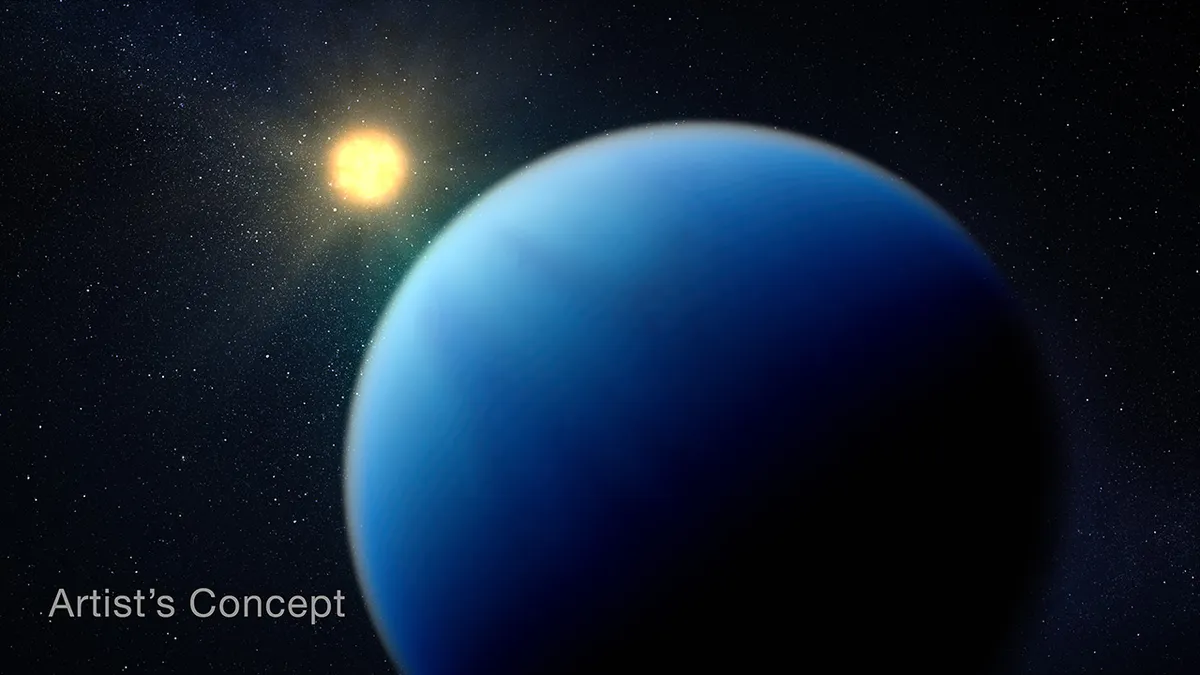
Nasa's James Webb Space Telescope (JWST) has made a groundbreaking discovery by detecting water vapor swirling in the atmosphere of the distant exoplanet TOI-421 b. This intriguing world, classified as a boiling-hot sub-Neptune, orbits a star approximately 244 light-years from Earth. The findings were detailed in a new study published on May 5 in The Astronomical Journal Letters, showcasing the potential of JWST in exoplanet research.
One of the most captivating areas of research in exoplanet science today is unraveling the origins and characteristics of sub-Neptunes. These planets are high in occurrence yet lack analogs in our solar system, making them a subject of intense study. The research team emphasized the importance of understanding this class of planets, as they were first identified by NASA's pioneering Kepler space telescope.
Before the advent of JWST, attempts to analyze the atmospheres of sub-Neptune planets often resulted in disappointing data. Observations using transmission spectra, which measure starlight filtered through a planet's atmosphere as it transits its host star, frequently produced flat or featureless spectra. This lack of detail hindered astronomers from identifying chemical fingerprints that indicate the presence of essential atmospheric molecules like carbon dioxide, methane, or water vapor.
The study team speculated that clouds or hazes could obscure the signals, preventing accurate readings. However, they hypothesized that TOI-421 b might present a unique opportunity due to its potential lack of haze. Principal investigator Eliza Kempton, a professor of astronomy at the University of Maryland, noted that prior data suggested certain sub-Neptunes, particularly those within a specific temperature range, might be less affected by atmospheric hazes.
TOI-421 b has an estimated atmospheric temperature of 1,340 degrees Fahrenheit (727 degrees Celsius), placing it in a potentially haze-free category. Previous observations with the Hubble Space Telescope revealed that sub-Neptunes with temperatures below approximately 1,070 degrees Fahrenheit (577 degrees Celsius) often exhibit flat spectral features. In contrast, hotter sub-Neptunes are expected to be devoid of haze since methane, a key component in haze formation, is less abundant at higher temperatures.
After conducting two transit observations using JWST's Near Infrared Spectrograph and Near Infrared Imager and Slitless Spectrograph instruments, the research team was rewarded with a rich atmospheric profile, revealing spectral features attributed to various gases.
The team successfully detected water vapor in the atmosphere of TOI-421 b, along with possible signs of carbon monoxide and sulfur dioxide. Interestingly, no evidence of methane or carbon dioxide was found. The data also indicated a significant presence of hydrogen in the atmosphere, challenging existing theories regarding the formation and evolution of sub-Neptune planets.
Eliza Kempton remarked on the unexpected results, stating, "We had recently wrapped our minds around the idea that those first few sub-Neptunes observed by Webb had heavy-molecule atmospheres, so that had become our expectation, and then we found the opposite." This revelation suggests that TOI-421 b may have formed and evolved differently compared to cooler sub-Neptunes, such as TOI-270 d, which had been previously observed.
The hydrogen-rich atmosphere of TOI-421 b is particularly intriguing, as it closely resembles the composition of its host star. Kempton noted, "If you just took the same gas that made the host star, plopped it on top of a planet's atmosphere, and put it at the much cooler temperature of this planet, you would get the same combination of gases." This process aligns more closely with the giant planets in our solar system, contrasting with the characteristics of other sub-Neptunes previously observed by JWST.
As Kempton expressed her excitement, "I had been waiting my entire career for Webb so that we could meaningfully characterize the atmospheres of these smaller planets." The study of TOI-421 b's atmosphere is a significant step towards understanding the formation and evolution of sub-Neptunes, as well as exploring why they do not exist within our solar system.